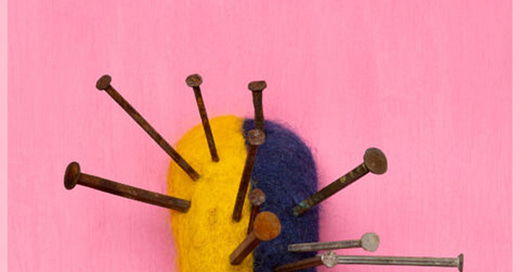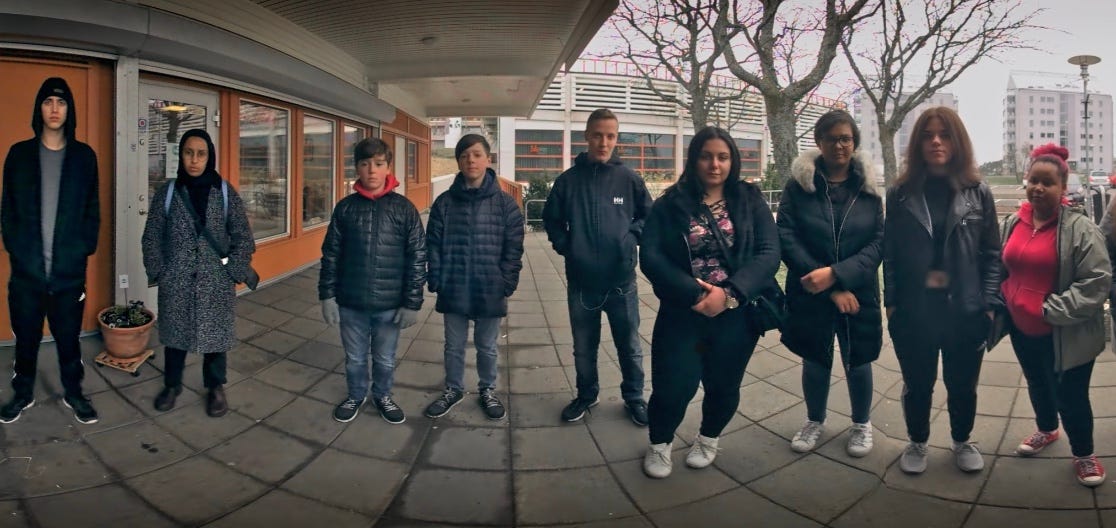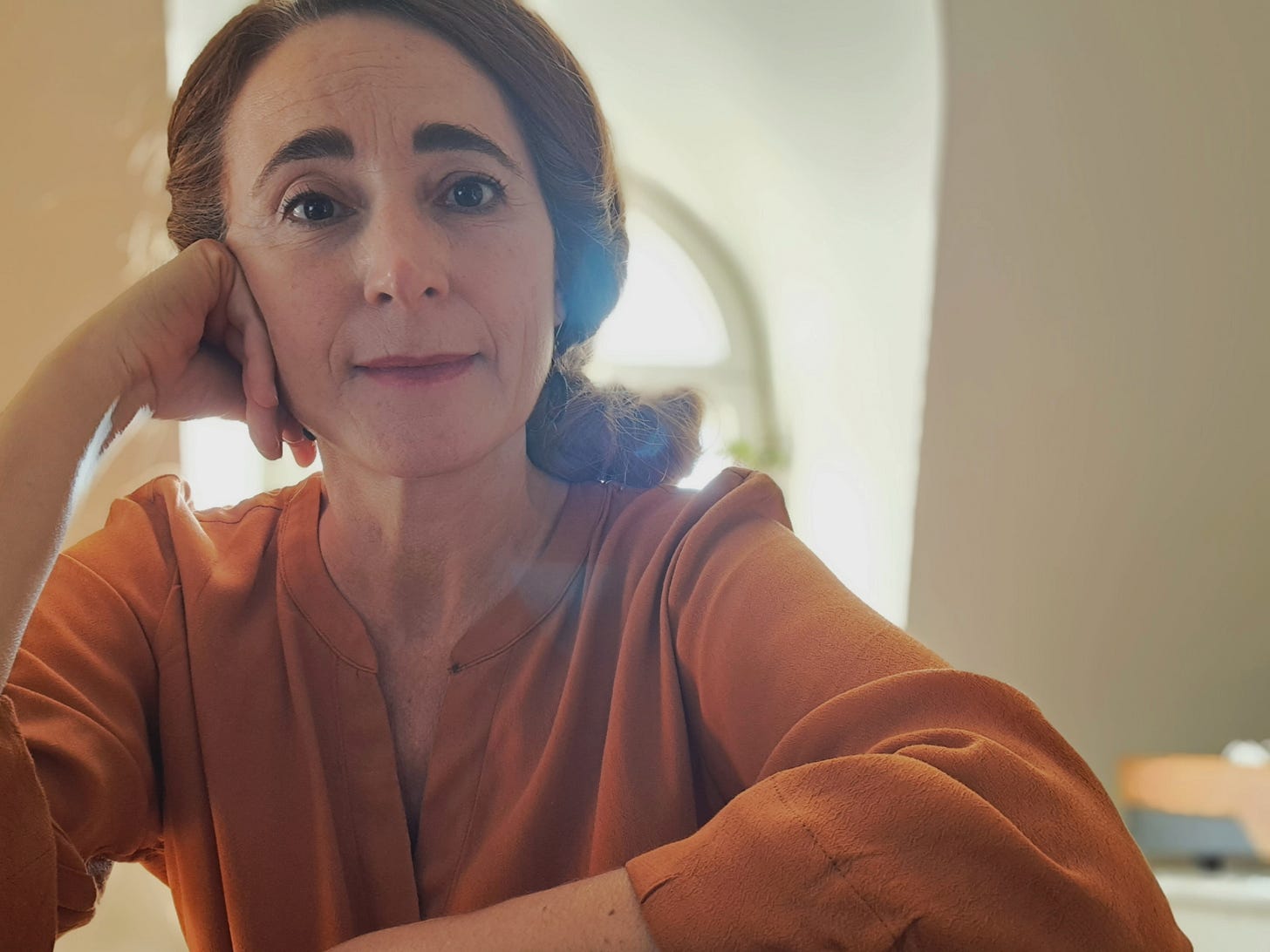Horrid Language
A conversation with Tarantula: Authors And Art's Inspiration for May, Meira Ahmemulić
Meira Ahmemulić is an artist and writer whose politically attuned and conceptually rigorous practice explores the intersections of language, identity, and environment. Born in Halmstad in 1974 and raised in Angered, Gothenburg’s largest area developed under the Million Programme, she channels both personal and collective histories into a diverse body of work that encompasses text, sound, video, sculpture, and digital media. Built during Sweden’s ambitious public housing initiative of the 1960s and 70s, Angered is today home to a highly diverse population, shaped by decades of migration and marked by both cultural richness and socioeconomic marginalization. Politically, it is often at the center of national debates around integration, segregation, and urban inequality—realities Ahmemulić engages head-on in her work. Her art consistently addresses the lived experiences of exile, working-class life, and migration—offering a sharp critique of the cultural and linguistic norms that shape who gets to belong.
Educated at Valand Academy of Fine Arts and the Academy of Fine Arts in Sri Lanka, Ahmemulić has developed a place-specific, experience-based approach that often returns to former Yugoslavia, her parents' homeland, and Angered, weaving memory and landscape into meditations on power, history, and representation. In works like Modersmålsmord (2022), she presents a haunting metaphor for the violence of language loss: preparing lamb’s tongue as her mother once did, she serves her son both food and a fragment of a vanishing mother tongue.
Ahmemulić’s acute awareness of language as a sorting mechanism—one that can liberate as much as it excludes—is further explored in her VR piece De höga husens rundgång/The tour of the tall houses, where the viewer is immersed in the sounds, voices, and visual fragments of Angered. The work presents a 360° experience of a district frequently portrayed in media and policy discussions as emblematic of failed integration or urban decline. By centering the everyday textures of life in one of Sweden’s most culturally diverse yet politically stigmatized neighborhoods, Ahmemulić constructs a polyphonic space that challenges institutional clichés about the "suburb." In doing so, she reclaims Angered as a site of complexity, memory, and resistance—offering a destabilized, and ultimately more democratic, point of view.
Her work has been exhibited at Blå Stället, GIBCA, Moderna Museet, and Malmö Konstmuseum, and her writing has been published in Ord&Bild and Glänta. In 2024, she was awarded the Swedish Arts Grants Committee’s major grant in visual arts and design, a recognition of her unwavering commitment to friction, pluralism, and artistic resistance.
In this interview, we speak with Meira Ahmemulić about the tensions within language, the ghosts of lost geographies, and the political power of art to name, resist, and remake the world.
If you close your eyes, what is the first image, sound, or feeling that comes to mind when you think of "where you come from"?
The image and smell of my mother. That makes me happy!
If you could describe your childhood in just three words — any words, any language — which words would you choose?
My mother’s textiles, needles, and scissors.
You grew up in Gårdsten, a Gothenburg suburb. How did your childhood surroundings shape your relationship to art?
My mother was a tailor. I grew up in a sewing studio—that was our home. We had two large industrial sewing machines and two “regular” ones— there were also dress forms, fabrics, threads, buttons, patterns, and so on. All the women in my mother’s family are skilled textile artisans, and we had a lot of craftwork at home.
In 1984, the graffiti documentary Style Wars was aired on Swedish television, and not long after that, tags and throw ups began to appear in the suburbs. It made a strong impression on me. I didn’t realize it at the time, but graffiti, in a way, inspired me to start writing.
I had a teacher in elementary school who noticed I was good at painting. I signed up for an evening class, a watercolor study group, which turned out to be for retirees; at the time I was still in middle school. But the teacher was an artist from Sri Lanka who had never managed to enter into the Swedish art scene, and he became my mentor. Eventually, I traveled to Colombo to attend the same art school he had gone to. I had no connection, no access to the art scene in Gothenburg, so I thought I had to go to Sri Lanka to become an artist.
It took me a long time to understand that I actually have an “art” background. None of what I brought with me to the Swedish Art Academy was considered valuable: my childhood in the suburbs and handicraft from the Balkans, which doesn’t hold high status. Eventually, I started to see my heritage as “useless,” something that was holding me back. I had to start over.

You describe discovering the art world later in life. What were the biggest challenges you faced entering it with a working-class and immigrant background?
The Art Academy in Sweden taught me that my experiences and my thoughts weren’t considered relevant since “nobody” could recognize themselves in them, according to my professor.
For six years, I didn’t meet a single teacher who could relate to me and my experiences, who understood what I was doing. I was mostly confused during those years. To understand what was happening , both within me and around me, since there was no one to talk to, I started writing. I wrote both about tags and in relation to them. Tags, which graffiti artists use to communicate, are often seen as meaningless scribbles—a written language understood only by insiders, written, often illegally, on surfaces that do not belong to those who write them. And perceived by outsiders as a defilement of urban space. I am always impressed by graffiti writers—no matter how often their tags are erased, they continue writing.
In your film Foreign Land, you explore ideas of exhausted bodies and yearning souls. Could you talk more about how your mother's experiences inspired this theme?
When I was growing up, I saw how work broke down my parents, my aunts, and uncles — all of them ended up on early retirement with physical ailments. Sweden exploited their bodies, took their youth, and made them ill while simultaneously denying them social inclusion and later denying them proper healthcare. Often my mother couldn’t get out of bed. She still dreams about ”“rest”— she often says that it is the only dream she has left.
Meira Ahmemulić, “Främmande land/ Foreign Land”
Your mother, a labor migrant from the former Yugoslavia, also pursued artistic training. How has your mother's journey influenced your own?
I remember my mother crying when I told her that I was accepted at the Art Academy. She thought I was ruining my life. My mother, Hanna Kolenovic, was an extremely talented tailor who never got a chance in Sweden. She saw her classmates become established designers and tailors while she was cleaning.
Sometimes I wish that I would have listened to her and gotten a “proper” education. She was right—I have never been able to support myself as an artist, and I still live in a rented flat. I never had a studio, etc.
You talk about the lack of acknowledgment of racism during your education. How does that silence still impact artists today?
When racism isn’t acknowledged, it becomes internalized, and you start questioning whether what you experience is even real. That legacy lingers. The silence creates a pressure to either assimilate or disappear.
How do you think Sweden has changed — or stayed the same — in these areas since you first started your career?
On the surface, there’s more talk now — more inclusion initiatives, more platforms for “diverse voices.” But structurally, the gatekeeping mechanisms are remarkably intact. Representation is not the same as redistribution of power. Sweden still struggles to recognize racism as systemic. It prefers the language of “difference” over the reality of inequality.
In your work, you explore how even small mistakes in language can shape perceptions of people with immigrant backgrounds. How did you personally experience this growing up and later as an artist? Can you tell us about the linguistic hierarchies you experienced?
Since art school, I have been interested in and have written about language itself—about power and hierarchies and how they are expressed and manifested in everyday language and in the urban space. I've also explored what happens to one's relationship with what is called "mother tongue," especially when that language has low, or no, status in Sweden, and how that affects the relationship to both the Swedish language and the so-called mother tongue.
I think a lot about the expression "to be without language"—what that actually means—or the idea of having a "limited" language. I think about people like my mother, who came to Sweden as a young woman and never really learned Swedish "properly"—which also raises the question, what does "properly" really mean? How much Swedish is enough? I think about my grandmother, who moved to Sweden when the war broke out and who was illiterate, and what it meant for her to be in Sweden without written language.
I constantly return to the dominance of the Swedish language. Perhaps because it has, quite literally, pushed aside my mother tongue—and at the same time, Swedish can never fully become mine—it doesn’t belong to me. (If a language can ever belong to anyone.) I never feel fully comfortable speaking Swedish and experience that I don’t truly master the language. The attempt to somehow make it mine is, I think, always present in my work. As if it's about a kind of conquest of language, but also, at the same time, a conquest of a narrative—one that I can recognize myself in, that is truly mine.
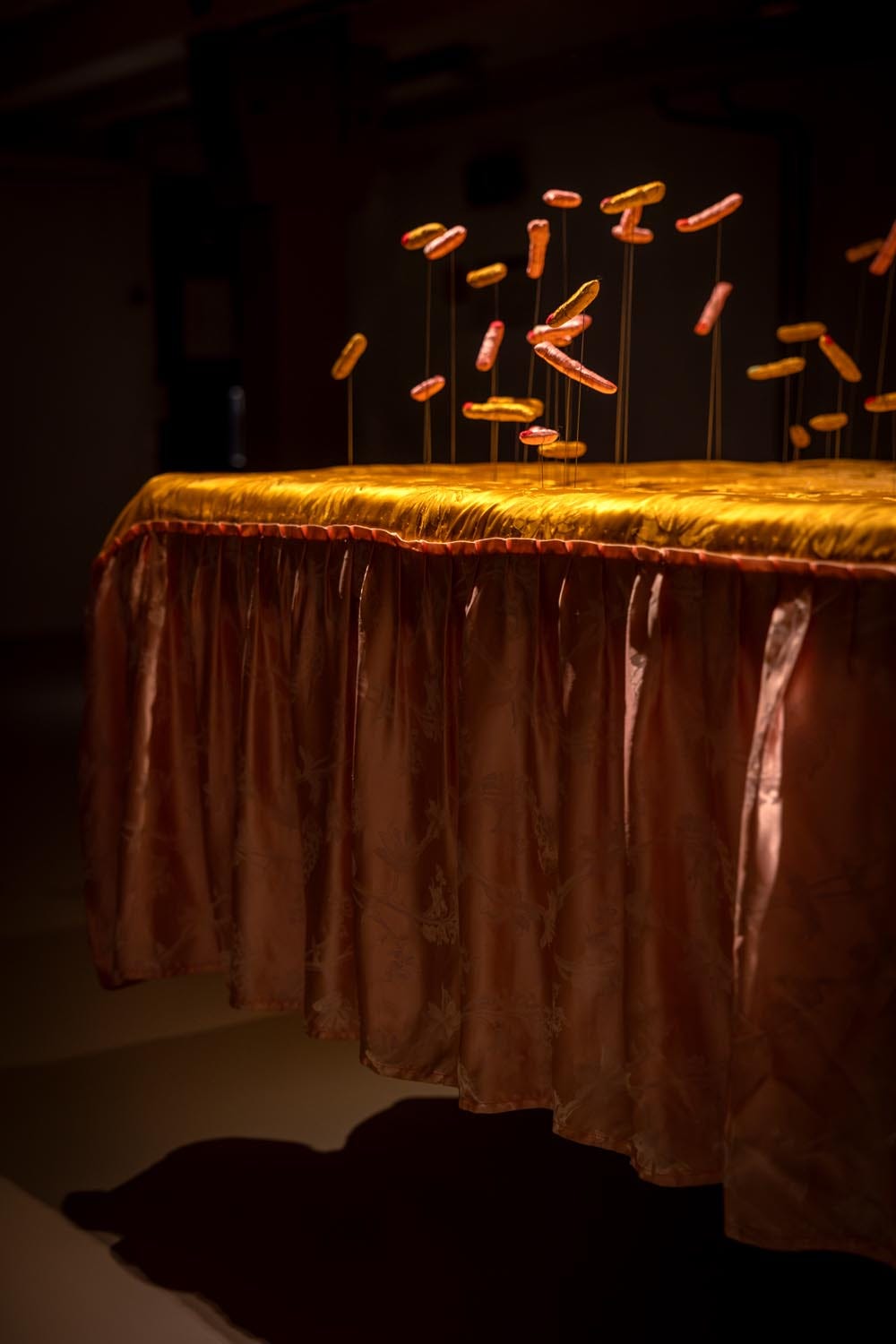
As a child, you helped your parents with the language because you had better language skills than they had as immigrants. It reflects inverted hierarchies within the family—the youngest has the most knowledge, and parents are the ones that need help. How did it affect your relationship?
I became an interpreter — not just of words, but of systems. Bureaucracy, school, letters from the authorities. It shifted the dynamic — I became a kind of bridge, but also a filter. I think there’s a kind of grief in that. You miss out on being just a child, and there’s often shame, both ways — theirs for needing help and mine for having more access.
Language can both oppress and offer resistance. Can you tell us more about the work “When Aunt Gave SKF the Finger”?
The title When Aunt Gave SKF the Finger (När moster gav SKF fingret) comes from the fact that my aunt, who came to Sweden as a labor migrant in the 1960s, lost her index finger while working at SKF (a Swedish bearing and seal manufacturing company), just like many others who immigrated to Sweden who suffered injuries at work. Those who came here had to take the heaviest and most dangerous jobs that Swedes refused. Exactly like it is today.
I have exhibited the sound piece together with the installation Silkfingers, which consists of a bed covered with a quilt in silk that my mother sewed more than 40 years ago. As I said, she was a tailor, but in Sweden she had to clean. My aunt was a weaver—she wove carpets—but ended up working in a factory. The work is about giving labor migrants justice, perhaps even allowing them to take revenge for having sacrificed their bodies and their health. Above the bed float fingers in silk, the result of workplace accidents. The reason they aren’t lying down on the bed to rest is because they are ready to claim justice. But also because they were never allowed to rest.
This quilt in glimmering pink and gold silk also reflects the aesthetic I grew up with—an aesthetic that existed in many Balkan homes and still does.
Meira Ahmemulić, När moster gav SKF fingret (2023) / When Aunt Gave SKF the Finger; This soundpiece explores the potential of textile craftsmanship, the haunting power of words, and the curse as an act of resistance. The work is inspired by curses from the villages of Gusinje and Plav in Montenegro, which lie in the shadow of the Prokletije – the Accursed Mountains. (In Swedish only)
Your most recent exhibition's title is Hemskspråket/Horrid Language. Can you tell us more about it?
The title is a play on the Swedish word hemspråk ("home language"), a term I’ve learned refers to my parents’ and my own home—even though I was born in Sweden—and to the language spoken in my parents’ country of origin. My first language is Swedish, and in the exhibition, I refer to it as Hemskspråket ("Horrid Language").
You have explored the experiences of first-, second-, and third-generation immigrants. In your view, how have the challenges of "becoming Swedish" evolved across these generations?
The pressures have shifted but are still there. The first generation had to survive — work, provide, and adjust. The second had to explain — constantly mediate between home and society and live up to the expectations of their parents—to prove that their sacrifices were not in vain. The third generation is expected to be fully integrated but is still marked as “other.” Each generation negotiates belonging in its own way—that we are even talking about a “third generation” means that they are not considered to be Swedish.
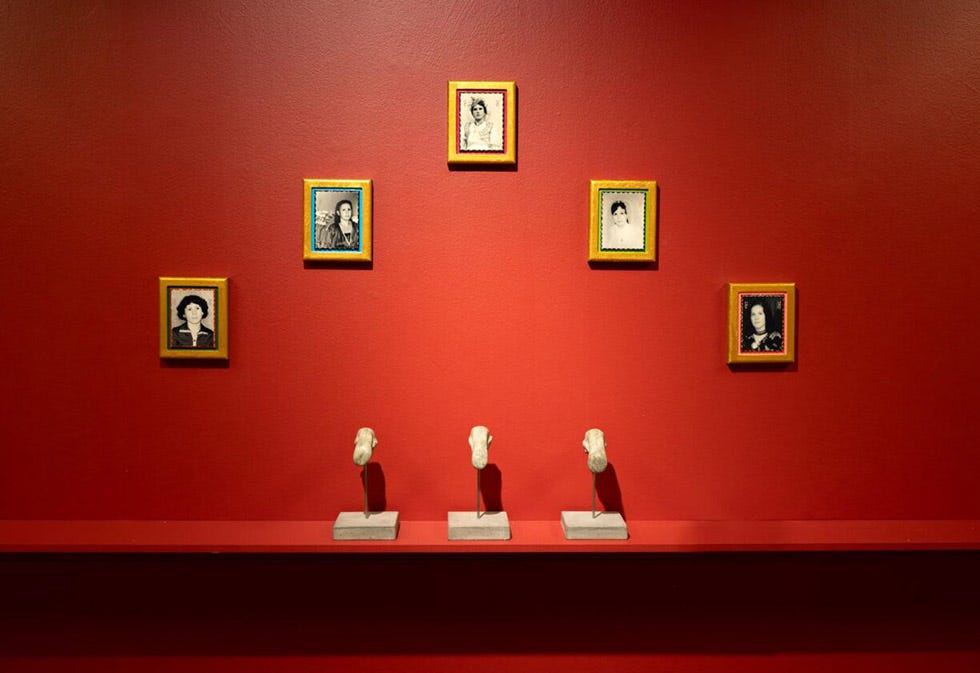
Looking at the art world today — both in Sweden and internationally — do you feel it has become more open to artists from working-class or immigrant backgrounds?
To some extent, yes — but often in symbolic ways. There’s more visibility, but not necessarily more influence. Many artists from these backgrounds are brought in to represent their identity, not to define the terms of the conversation. The art world can be curious — even fascinated — by “the other,” but rarely willing to truly share power or shift its value systems.
There’s often a celebration of 'different' voices'—but who gets to decide which voices are 'interesting enough' to be heard? Who are the "gatekeepers"?
Exactly. “Diversity” can easily become a curated spectacle. It’s still often white, middle-class curators, critics, and funders who determine what kind of difference is palatable and what kind of pain is aestheticized. Gatekeeping today is more subtle but just as powerful — it rewards what’s legible and digestible to the dominant culture.
When marginalized artists are finally invited into prestigious spaces, are they expected to perform their identity in a way that fits certain expectations — rather than being free to express whatever they choose?
Yes, very often. There’s a kind of unspoken script — your story must be personal but not too angry, political but still poetic, and “authentic” but accessible. And if you deviate — if you speak in a way that challenges the comfort of the audience or the gatekeepers — the invitation may not come again. The risk is that we’re asked to reproduce trauma in exchange for visibility.
Is there a part of the art world today that gives you hope — a movement, a platform, a place where you feel real change is happening?"
Yes. Artist-run spaces, grassroots initiatives, and collectives that operate outside the big institutions — these are places where real experimentation happens. Where artists aren’t just exhibiting work but building alternative ways of working together. Also, some younger curators and educators who understand the importance of slow, deep change — not just symbolic gestures.
To go back to your work, what are you working on right now? Where can we see your next exhibition/project?
Among other things, I’m working on a script for a film project about language. Previously, I have written about my mother tongue in Swedish—this is a bilingual script about what it does to a person to have a different mother tongue than the language of the majority, Swedish.
Together with artist Emma Dominguez, I’m also working on a public artwork in Kortedala— a monument that will celebrate the neighborhood, which is Gothenburg’s first suburb, but also honor the high-rises, the architecture, and the labor migrants who were vital to Swedish industry and Sweden as a whole. It’s about opening up what a monument can be, whose achievements are highlighted, and who is considered important to a place, to a society.
I am also doing a new piece for Göteborgs Konsthall within the project “Fältstudier” that will open in autumn. It's sort of a continuation of the works "When Aunt Gave SKF the Finger" and "Silkfingers."
Buy our print magazine by clicking on the following link
https://tarantulaauthorsandart.substack.com/publish/post/129709764

